Content:
- Corsican Mafia
- Maghrebi/Arab/African Gangs
- Travellers
- Organitskaya
- Yellow Helmets
- Club des Jacobins
- Mummers
- Les Libertins
- Le Cordon Rouge
Corsican Mafia
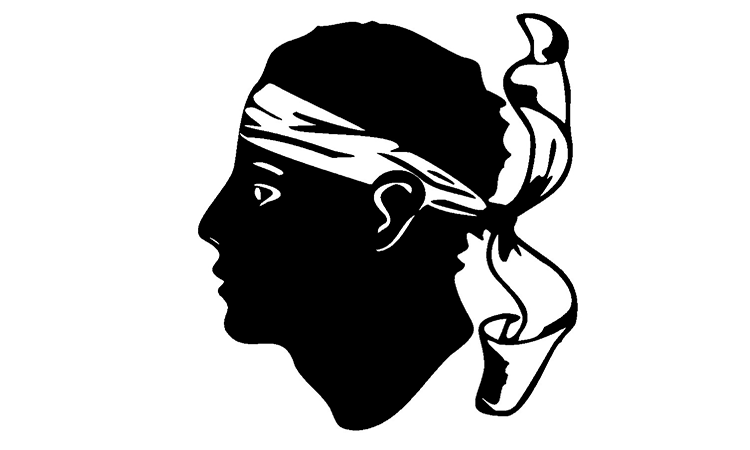
Territories: All of France. Mainly Corsica and Provence-Alpes-Côte d’Azur
Ethnicity: Corsican and Italian-French
Activities: Racketeering, drug manufacture and trafficking, extorsion, smuggling, robbery, loan sharking, human trafficking, pimping, money laundering.
Description: The largest and most influential criminal organization in France throughout the 20th century, the Corsican mafia has not only survived but increased their sphere of influence. Traditional yet adaptable, they dominate the French Riviera and have revitalized the area.
The organization is close-knit, shrouded by fear and bound by loyalty. Those who are members of the Corsican crime organizations do not betray each other and see each other as members of their families. It has been historically known that when members of the Corsican mafia get caught they go silent and receive full sentences, better for them to go down than for the organization to fall. If this is instilled by fright or fealty, opinions differ. They follow the Omertà as most southern Italy criminal organizations do.
Passing through many businesses, the Corsican mafia is not slow to change and to adapt to circumstance. From being the drivers of the French Connection, moving and manufacturing heroin from Asia to the United States, to then diversifying their business to smuggling, racketeering and pimping. Now the Corsican mafia is as strongest and influential as it has ever been.
After the middle east meltdown, the French riviera was dying. What once was a wealthy and luxurious destination was falling into decay and poverty. The datakrash and the decadent south of France were the perfect opportunity to bring to western Europe the freedom of the Scandinavian countries, and the Corsican mafia took advantage of that. Unable to travel as much and as cheap as it used to be, those seeking the thrill of drugs, unregulated gambling, and illegal braindances needed a new destination closer to home. Be it in the state that it was, the mafia had it easy purchasing land and properties in the riviera at pennies of their price. Fronting with casinos, luxury resorts, and nightclubs, the mafia hides their illegal gambling, moves drugs around and cover for their prostitution and braindance brothels. Keeping thousands employed and providing with entertainment to the elites, the dark side of the Côte d’Azur is Europe’s biggest open secret.
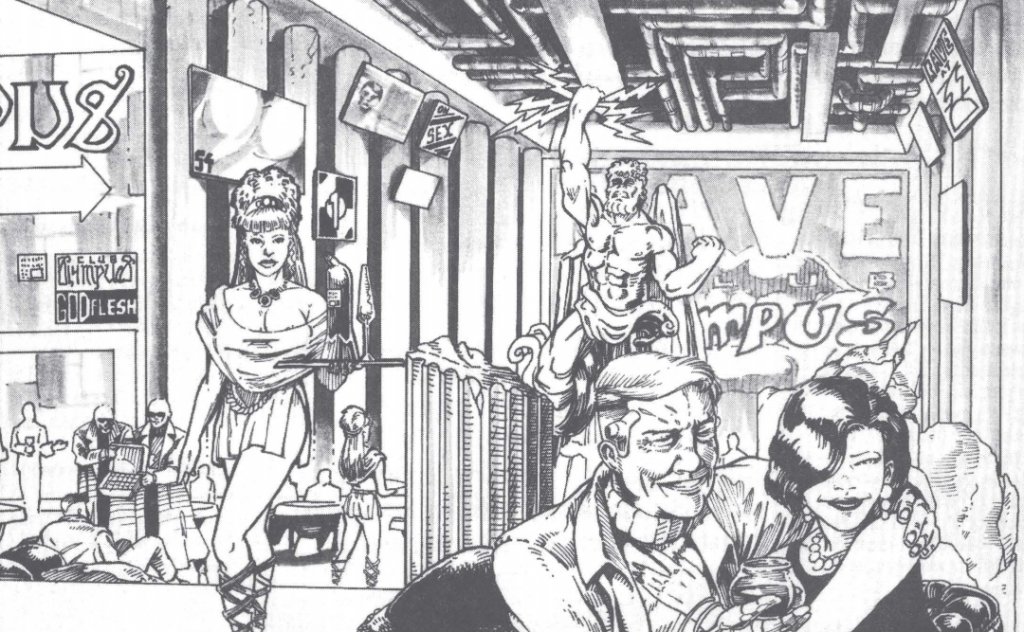
The Corsicans are also Europe’s primary drug producers. With a tight control over the southern ports of France and the surrounding waters, including Marseille’s ports, they make and transport drugs from northern Africa, and have fleets of heavily armed ships where they both move and manufacture drugs (The Corsican factory ships are known and feared across the Mediterranean). The Corsicans and Europa Sur have a tight alliance, the mafia moves their goods in their businesses in the riviera and, in turn, Europa Sur smuggles products and Corsican produced drugs throughout the Mediterranean countries.
Flooded with wealth and with the lessons from the violence from the late 80s to the late 2000s, the families and gangs stopped fighting among each other, and instead present an united front against the Maghrebi gangs and the Organitskaya. Territorial issues get resolved among the families when they rise, but they do not happen often, because the families keep a balance on their profits by using each other companies and services in each other businesses.
Organization: The French mafia, because of their origins, shares a similar organization and structure with the Sicilian mafia. A Beaux voyous (good fellow) maintains, operates and protects mouvances (areas of influence), which can mean some type of activity or an area of a city. The most successful and more influential good fellows can achieve higher power and wealth until reaching the status of Caïd or Parrain (Boss or Godfather).
Whenever a task needs to be done, a goodfella will organize a équipes à tiroirs (multi-skilled group) with skilled individuals (muscle, specialists, brains) to carry out the job. Some specialists who often work together form small gangs and can become quite famous in the French Milieu.
The Corsican mafia is very specialized, skilled, and characterizes for their professional gangsterism. A group under a goodfella is usually highly specialized, knowledgeable over their business and territory, and always looking for new avenues to conduct business. As profits increase, they diversify but remain as fixated on their knowledge and ability to operate new mouvances or expand their mouvance as they did in the first day of criminal operation.
Allies: Europa Sur, Nuova mafia, Parts of the Organitskaya
Maghrebi/Arab/African gangs
Territories: All over France. High presence in impoverished urban areas of large cities.
Ethnicity: Maghrebi, Arab-French, Afro-French.
Activities: racketeering, extorsion, drug trafficking, kidnapping, robbery
Description: Sidelined by French society for decades, kicked and forgotten in ghettos, generations of Arab-French and Afro-French created their own separated communities. Grown with immigrants from the Middle East meltdown, and later, from the crack of Fortress Europe, the Maghrebi, Arabs and African communities are strong and large. While many found work and wealth in France, others did not and joined the life of the Milieu (Underground).
The gangs often appear spontaneously, young immigrants or immigrant descendants who, lacking opportunities or looking for luxury, band together and gradually become more lawless and vicious. Other gangs form looking for survival. Neglected kids and teens fighting their way and defending themselves from the brutality of the combat zones. The Arab/African gangs are very territorial and aggressive. Any criminal activity in their districts from other criminals will be dealt with swiftly and forcefully, be it for protection of their people or protection of their business.
Most gangs are made of small groups of youth from the immigrant areas committing petty crimes, moving drugs and weapons, and doing work for bigger criminal organizations. However, in some developments, specially in the newer outer ring container housing camps and traditional immigrant areas, bigger and better organized criminal Arab/African gangs have formed in the last decades.
While the smaller gangs seek nothing more than survival and thrill, having no boundaries to their ruthlessness, some larger and more established ones have formed in response to criminal activities in their areas. By fighting fire with fire, ex-gang members and tired citizens armed themselves and take control over territories and give them security and services in exchange for payments. These defensive gangs charge local businesses for protection and in some cities have even taken over buildings and rent them for low prices, kicking out or threatening the landlords, but helping the people in their neighborhoods and profiting themselves. Some gangs might even take care of providing services and selling goods to their people, specially in combat zones and the needier areas. Naturally, not all large gangs operate with good will, and dominate their areas with violence, profit from drug trafficking and racketeering, and are more than willing to kill and extort the people in their areas.
Maghrebi gangs are constantly in conflict with other criminal organizations and between each other. Marseille is a particularly brutal example of this. Armed encounters between each other and with the Corsican mafia for control of territories and businesses can turn bloody and the body counts rise very high.
Organization: As with most youth-centered criminal activity, organization and hierarchy are very loose. Smaller groups have little to no leadership and as they grow form soft hierarchies with smaller groups operating on behalf of a leader for a cut. Some gangs might follow a hierarchy similar to the Corsican mafia. More traditionally oriented gangs might follow organization and leadership based on religious or societal norms from their cultural origins.
Allies: Usually not allied, but if circumstance needs it, they might federate with other gangs and form bigger criminal organizations.
Travellers
Territories: All throughout France, mostly in the outlands and rural areas
Ethnicity: Varied. Irish, English, Roma, Yenish (not an ethnicity but a group of people), and others.
Activities: Robbery, smuggling, drug trafficking, racketeering.
Description: Europe has a rich history of nomadic people and France is no exception. Many traveler groups have joined trading networks or the Romano jekhetanipe, but some others refuse to “assimilate”, as they call it, and stick to their traditional nomadic ways or become criminals.
France has a small population of Pavees, Yenish, and Roma travellers moving around French cities offering craft and trade work, smuggling harmless goods, and, mostly, just keeping to themselves. When working, they settle temporarily in caravan parks or unoccupied lands on the outskirts of cities.
Some traveller groups might form gangs and take up to highway robbery, even against the traveller trading networks. Others form racketeering or tolling schemes and some work with bigger trafficking criminal organizations to move drugs, weapons and other illegal goods for them.
Organization: Varies. Soft hierarchies with a leader or groups of leaders deciding for the tribe
Allies: Traveller nations, some connected to the French Milieu
Organitskaya
Territories: Eastern France. Marseille.
Ethnicity: Former Soviet Ethnicities
Activities: Extortion, racketeering, weapon trafficking, human trafficking, prostitution, money laundering
Description: Battle hardened during the USSR times and tried by fire in the Neo-Sov era, the Organitskaya is a powerful set of criminal organizations, who mostly operate within the Neo-Sov countries but have a few groups operating abroad.
The Russian organized crime was already very active in Europe during the 2020s, but the weakening of the Fortress gave them an opportunity they were longing for. The western Europe underground was looking for weapons and “cheap” labor, and the Organitskaya was willing to provide that. Already having some business with human and arms trafficking, they took the weakened borders and heavily expanded their operations, making alliances with dozens of criminal gangs all around Europe.
Exploiting the corruption and poverty of the NCE and Neo-Sov countries, criminal groups established schemes to lure or kidnap people and take them to Western Europe for prostitution and forced labor. Ruthlessness and brutality are weapons of choice of the Organitskaya to submit their victims into silence and to keep them working in their and their allies businesses.
The Organitskaya transportation network is very intricate. They have fake businesses and office buildings throughout the whole trafficking route where they pretend to house and employ the captured people. Smugglers and corrupt border patrol officers pass weapons and people through the core country’s frontiers. Traveller gangs and the Organitskaya keep itinerant camps where they house the people in the core countries until they reach their destination. The mobs take individuals from the whole former Eastern Bloc and the Balkans, sometimes with promises of work, sometimes kidnapping them, and sometimes extorting them and threatening their families.
A large section of the Bratvas, ecstatic with their newfound business, have decided that, instead of fighting and spending resources and personnel, to ally themselves as providers for the existing underground in the core countries and profit with little conflict and waste. This section of the Organitskaya in France has allied themselves with the Corsican mafia, feeding them with their needed weapons and people for their operations in the Riviera. After some negotiation, both armed and unarmed, this faction of the Organitskaya has taken control of Lyon and surrounding areas, and from there they “outsource” people to their allies at the South.
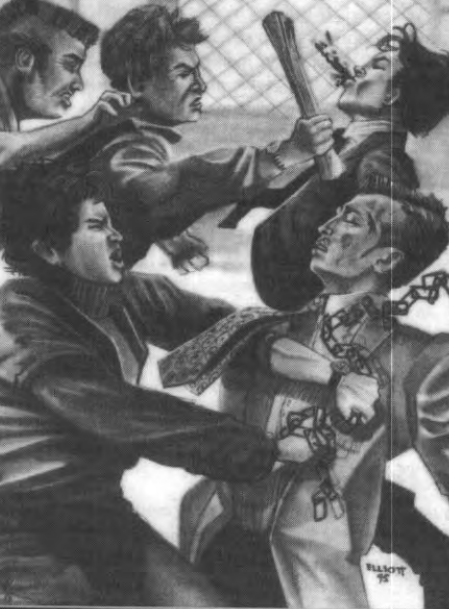
Another set of Neo-Sov mobs and criminal organizations want, also, to take part in the trafficking to Western Europe, but instead of sharing their profits with the local criminal organizations they prefer to stick to their roots and take over by force. In France, based in Marseille, Neo-Sov syndicates war constantly with the Corsican Mafia and the Maghrebis for control of the city, and hope to, one day, take over the port. These Bratvas consider the gangs that collaborate traitors who have forgotten the code: only help yours, no authorities, no outsiders. They have declared war (The Shlyukha war) with the Corsican-allied gangs and often attempt to take over their routes and territories in Lyon.
The Organitskaya has found outstanding success in their recruitment because of the illegal immigration from the NCE and the Balkans. Young migrants with no language, no money, no documents and no jobs were lured by the opportunities the criminal life offered and quickly joined their ranks.
Organization: The Organitskaya has a loose organizational structure, although with some defined hierarchy. Many groups operate as regular street gangs, joining in small groups with some leadership on top. However, the biggest and most successful syndicates have a very strict organizational structure that allows them to allocate work efficiently and to have some separation and deniability, protecting both the organization and those on top.
A bratva’ boss, called a pakhan, controls four criminal cells though an intermediary, the brigadier. The pakhan, with some councilors, makes the elite group, who are in control of the entire operation. The elite group is the equivalent of the syndicate management and is in charge of strategy, ideology, and planning. In order to secure its power, the pakhan has two spies who also work as sub-bosses, looking over the brigadier, ensuring he stays loyal and does not acquire too much power. They also aid with management of the organization.
The second cell, the security group, often led by one of the spies, as its name implies, is in charge of security and intelligence. They oversee the operation, keep it tight and isolated from prying eyes, ensure peace within and with other organizations, and pay off the right people to keep the Bratva safe.
A third cell, the support group, also usually led by the other spy, is in charge of organizing the jobs that need to be done to keep the organization functioning. They supervise, collect money, and arrange specialized groups when needed. The support group and the security group are at the same level of authority, answering directly to the elite group.
The fourth and last cell is the working group. They are the ones who do the actual criminal activity and are led by the support group, who give them orders and manage the profits. The groups are usually small units of 5-6 patsanov (soldiers) who answer to an Avtoritet, doing the on-the-street work.
Allies: Corsican mafia, traveller gangs, loosely affiliated with Maghrebi gangs.
Yellow helmet movement
Territories: Paris, Strasbourg, Toulouse, cities with high industrial activity
Ethnicity: Any
Activities: protests, street demonstrations, vandalism, rioting, terrorism
Description: The French people does not let their government screw over them, or at least that’s how it used to be. The yellow helmet movement is the latest (and maybe last) expression of the French revolutionary spirit.
Birthed during the food shortages protests, they got their name from the demonstrators that attacked the Palais Bourbon, who fought against the gendarmerie and the army, armored with industrial protective equipment. Being that most of the equipment they got from labourers, most of them got yellow color helmet, hence the name.
After the 2nd Bastille Day and the birth of the 8th republic, the group stayed united but with little activity. Once futarchy was instituted it became clear that the new status quo was to keep pushing workers and regular citizens aside for the benefit of others. Since then the group has become more active. Fighting for the destitute and the thousands of people who regularly get laid out by the modernization pushes, or trying to.
The group membership is very diverse. The unemployed, sick of being invisible; unionists, powerless against the new system; workers turned obsolete; former politicians, at least those who used to legislate for the low and middle class; activists for many causes: environmental, community, anti-corporatists; anarchists wanting to get rid of the system; Ultra-nationalists and Gaullists who feel France has lost its way, becoming another pawn in the game of the EEC; Far-left radicals who see the new markets as the latest and sickest stage of capitalism. Groups who once would have had little in common fight under a somewhat unified banner against the 8th republic.
The yellow helmets operations are as diverse as their members. Some cells focus on community support, helping the disadvantaged and those ran over by the new progress. Other cells take part in the group with activism and politics, demonstrating and lobbying against measures and actions against the people’s interests. The most radical members will resort to rioting, vandalism, sabotage and even terrorism to air their grievances with the system, and it can go from minor operations to very large organized hits against corporations. The more activism-oriented sections of the yellow helmets constantly denounce the militant sections, but their cries are ignored, it is more useful after all to convince everyone that all of them are terrorists and discredit the whole movement.
Organization: Varies. The groups who protest, lobby or support normally have little to no hierarchy, forming ad hoc when need rises and carrying on from then.
The extremist sections organize in military hierarchy similar to the leftist guerrilla organizations from the 20th century, but with less central organization as their numbers do not require it. They operate in squads formed by 12 soldiers with a deputy and a commander leading them. Two squads form a guerrilla and two guerrillas form a company. A Sergeant second and first class are a guerrilla deputy and commander, respectively. A lieutenant and and a captain lead a company. Companies travel together mostly and work jointly when a bigger operation needs to be done. From some intercepted communications there is the suspicion that there is a central command who gives instructions and information to their militants, but little is known about this intelligence cell.
Allies: None known.
Club des Jacobins
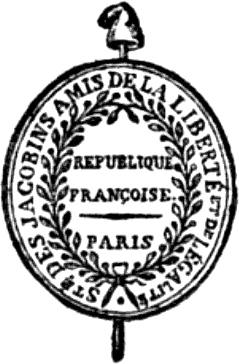
Territories: Small cities in rural areas of France
Ethnicity: Any
Activities: Forced labor, kidnapping, squatting, extorsion
Description: Created as a philosophical/political movement by a goldenkid turned politician, the Jacobins became what they are in the time of the red by meeting since the early days of 4th corporate war. They organized at first to discuss politics and ethics around corporatism, liberalism, democracy and several other subjects. The tension and turmoil of the war brought together elites, politicians, celebrities and academics to the halls of the Jacobins, to both discuss current affairs with a focus on classical and enlightenment philosophy and network with other influential individuals.
As time passed, embroiled in the postwar issues, the club membership increased. It transformed from a group of millionaires discussing politics to a large group of people from many walks of life receiving seminars and participating in panels, working with politicians, learning and giving perspective to influential people. The narrative of the Jacobins conversations often revolved around values of the enlightenment and the French revolution: republicanism, nationalism, equality and democracy.
But the tone of discussion in the club was quickly shifting, from amicable talks to ideological posturing, puritanism and gatekeeping. The veteran members, in particular the movement founder, Maximilien de Lorraine, reached a guru-like status where their words and opinions were repeated almost as gospel, and turned into documents and books to guide the teachings of the new members, in exchange for some contribution of course. It did not take long either for groups to join into communes and spend their days between working to keep their villages functioning and studying the essays from Maximilien and other classical liberals.
The club’s principles took a sharp turn after the establishment of the 8th republic. Their rhetoric turned much more aggressive, decrying that the new republic was just the death of the republic, democracy and all that being French represents. They declared themselves as rebels, rejecting the authority from the government and formed what would be the equivalent of corporate towns but for the Jacobins. The new communes armed themselves with their own police force, produced their own food and energy, and created their own businesses and industries to produce money and preserve themselves. Dozens of Jacobins communes formed all around France with money from dedicated members, membership skyrocketed by the thousands.
A politically active group, isolated in their own villages, listening to no other than themselves, festering in their own ideas, just kept, as to be expected, radicalizing themselves until their beliefs became what can only be described as fanatical. The word from the top cabal was now considered almost holy, dissension was quashed, deviation of thought was criticized and even silenced, and knowledge became top-down, limited to those loyal and dedicated to the cause enough, and walled by contribution or work for the club.
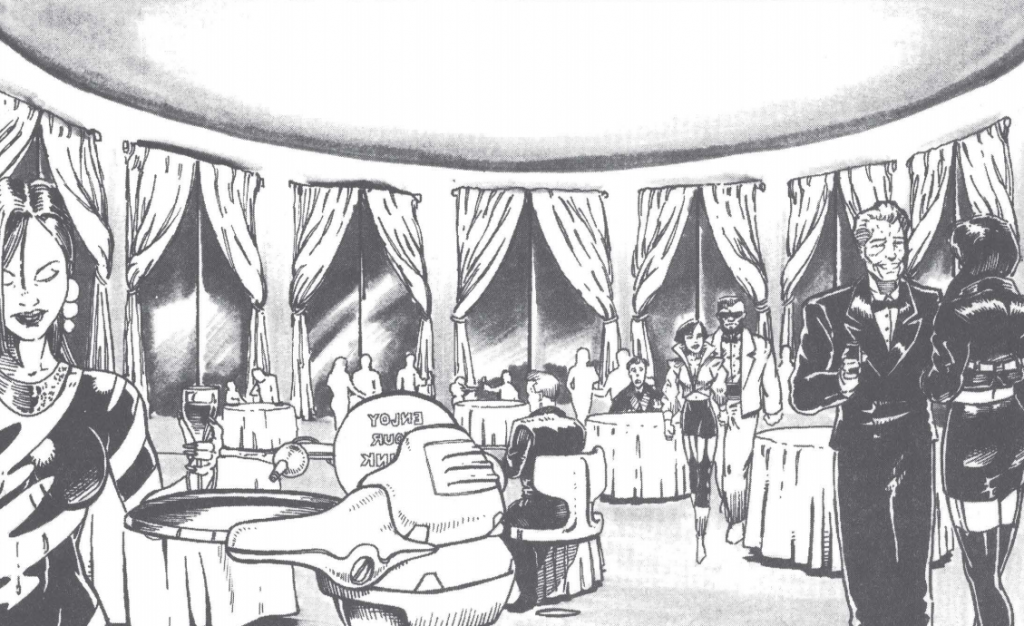
The club exists in two distinct realities. The wealthier members have the better time among them all: regular seminars, books, and courses. They get to network and party with other affluent members. In exchange, they are stripped out of thousands of Eurodollars in fees, books, contributions, invitations, conferences and any other excuse they can find to suck them off their money. Those well-off and prominent members had many liberties, as long as they do not deviate too much from the path, and even though they live in the communes, they may leave and come back freely.
The rest of the associates do not live so freely, although, if asked, they will say otherwise. As fees and contributions to get educated and climb in the ranks are extremely high, those unable to pay are encouraged to join “The league”. Advertised as the heart of the Jacobins, the most dedicated members, carrying the future of the club on their backs, they work for the communes and in exchange they get housed and, supposedly, educated. The truth was diametrically the opposite. The league members were indeed carrying the club on their back, with very heavy work, long hours, and meager pay. The league works in almost every aspect of the communes: food production, maintenance, cleaning, factory work, office work, and, most importantly, persecuting members for subscriptions, books, classes, and donations. In exchange for their work the league is lured with promises of free study and materials, and they might get some, but very spread and far in between.
The brunt of the group’s zealousness was received certainly by those critical or divergent of the club’s thought. If your opinions were too different to those espoused by the top, you’d first receive some very stern reprimands, then some mandatory classes, later sessions where your ideas and identity will be thoroughly dismantled, and, finally, those persistent, will be expelled. Those disfellowshipped face two options: to accept their removal and be cut out from their friends and support, most times friends of years and even family, or join the “reeducation project”. The first, the ones banned, if they keep to themselves, will not have a hard time. Unless one used to be too high in the hierarchy and has too much information, the Jacobins are not interested and will simply let you go, but they will forbid other members from having any contact with you. However, if you keep criticizing the club from outside of it, then harassment, defamation and threats, even armed ones, are not above the Jacobins, they will not relent until you are silenced.
The “reeducation project” is the place where those contrarians to the cabal’s teachings are to be tutored. But it is also a place of very intensive manual labor, long hours of brainwashing, sleep deprivation, hunger and abuse. The project’s camps are akin to a gulag, fortified, isolated from the others, dilapidated, where the participants are torn down, insulted, broke apart mentally and physically, and then built from the ground up as a compliant good Jacobin. The people in the reeducation facilities are treated as slave labor, working harder and longer than the league with no pay. In the best of cases, it would take years to leave the project, and at worse, it becomes their prison for life.
The Club des Jacobins is very protective. No outsiders are allowed in, unless they present interest in joining, and even then they are not led anywhere important or revealing of the commune’s inner workings. Their towns are walled, monitored and rounded by loyal guards who will not hesitate to apprehend or shoot intruders. Their public image is essential for them and they spend millions of Eurodollars in propaganda. Their celebrity members are paraded around as poster boys, put in front of the vid to talk about how great the Jacobins are and how much of their personal success is owed to them.
Organization: Hierarchy in the club is of utmost importance. The more money members spend in classes and material, the more they will scale in the ranks. The initial ranks are: Initiate, fellow, apprentice, and bachelor. After those ranks there are dozens of paths, if one sinks enough money, to keep specializing in the many subjects: ethics, epistemology, logic, metaphysics, different schools of thought, and any other made up course they can think of to charge people for. In those schools their ranks are normally numerated, and they keep increasing in amount as years go by and more material gets written. Knowledge and access are kept very vertical, members higher in the scale barely interact with those below, and information is limited and hidden all around.
In the league, ranks are designated not too differently as they would be in a work environment: supervisor, manager, area manager, VP, senior officer, chief officer, etcetera. Higher ranks decide when to ascend their workers to a next stage, up until the chief officers, who are appointed (and very often removed) directly by the core fellows.
The most prestigious position one could wish for as a league member, even more than managerial roles, is to be picked for the militia of the commune. Only the proven loyal, fanatical and devoted to the league and the club are trained by excellent solos, netrunners, techs and medtechs and assigned to work or fight either protecting the communes or doing work for the club, specially against critics.
The core fellows are the highest and most prestigious group in the club. They produce the materials the rest learn from, give speeches and are almost godlike. The only way to become a core fellow is to be selected by Maximilien himself and the few that have have been accepted are so exceedingly rich and are so invested in the club that are indoctrinated to the core.
Allies: None.
Mummers
Territories: None, itinerant gang appearing where their victims are.
Ethnicity: Unknown.
Activities: Kidnapping, torture, murder, terrorism.
Description: When society silences their own, people will fight back, by any means necessary. The cyberpunk world is not a fair one, and there is always going to be a politician, a corporation or a gang taking advantage of someone who cannot defend themselves and walking away unnoticed or unpunished. That is if they escape the mummers. Bringers of vengeance to those who do not get justice otherwise, the group formed decades ago and has been active in France. They are not interested in retribution for the victims, they just chastise the offender.
There is not much known of the band day-to-day operation, profits, recruitment or location (although it’s suspected that they select their new members from the most skilled and tormented of the victims of those of those who the mummers punish). What is known is that their ruthlessness, effectiveness and stealth is unmatched. If a highly publicized case where corruption goes unpunished, a fraudster takes from the needy, or a murderer is let go, the culprit should look over their shoulders because a mummer might be breathing down their neck. Once an objective has been chosen, the mummer’s victim will vanish right in the middle of their day. Their car left open in the middle of a highway, their house empty during breakfast, their suitcase abandoned in the middle of some street, with the recordings from the cameras gone, no commotion and no evidence. Cryptic images, videos, documents and braindances show up for weeks afterwards throughout the city, in the Citinet, in intercepted vid transmissions, screamsheets, billboards, inside products in bodegas and vendits, and in many other unusual places. Those deliveries would have clues, symbols or evidence of the victim, their crimes, and their incoming punishment.
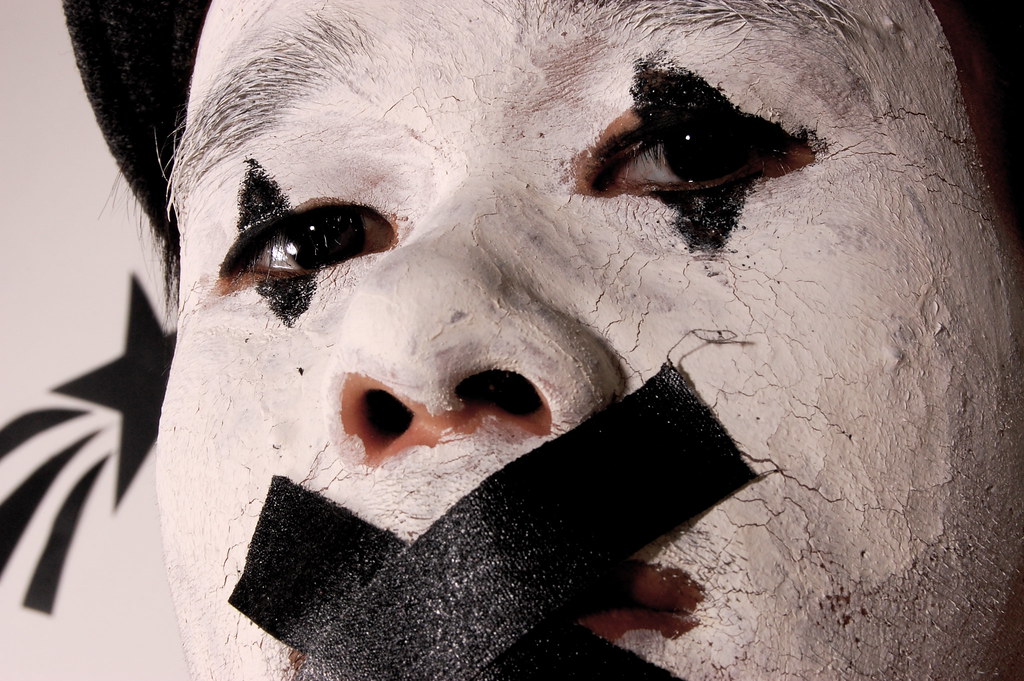
Weeks gone by, it’s show time. Usually transmitted live and with well rehearsed, high-quality performances, the sentences and penance for their victims are brutal, gory and frightening, extremely so. The medium of distribution always changes and appears in the less expected of places. Some of the recorded cases have been: mutilating those who silenced their victims; asphyxiating murderers in transparent boxes; stuffing or mounting major criminals; combat theatrical plays, but without props; game shows with very high stakes; starvation with fake food; magic shows with bloody results. Their ideas seem to be limitless. Dumps of evidence accompany the plays, many times unpublished and even unknown evidence. Is believed that the mummers monitor, follow and study their victims with surgical detail to leave no question of culpability of their prey and no tracks when kidnapping them.
The mummers appearances vary, but are centered in performance arts. From classical mimes with their striped clothing, face paints or masks, to modern mime representations with disheveled clothing and consternated faces, passing through costumes with very grotesque features and jester-like figures, all the way to intensive and monstrous body modifications. Although is tempting to compare the mummers to other gangs with similar aesthetics, such as the Bozos and Julliard, the analogy would fall short. The mummers handpick every element of their costumes: the details of their makeup or masks, the colors on their clothing, the weapons they use, their movements, their actions. Every single element is accounted for and has a meaning, even if the viewer cannot notice it.
Organization: No organization known, but it is doubted that there is any. It’s likely their structure is communal and akin to small theatre companies, with all deciding and devising their operations.
Allies: None.
Les Libertins
Territories: Itinerant. Because of their activities, they travel often.
Ethnicity: Any.
Activities: Kidnap, murder, torture.
Description: Pleasure, thrill seeking, the libertins want nothing more than to make their pleasure the highest. Looking for beauty, longing for luxury, yearning for art, and craving for sex. They want to be involved in the poshest parties, to consume the most expensive and tasteful of foods, have the most attractive partners, create and consume the most sought art, to have it all without restraint. But the time of the red is not a time of plenty, and those outside of the elites cannot get the best of everything all the time.
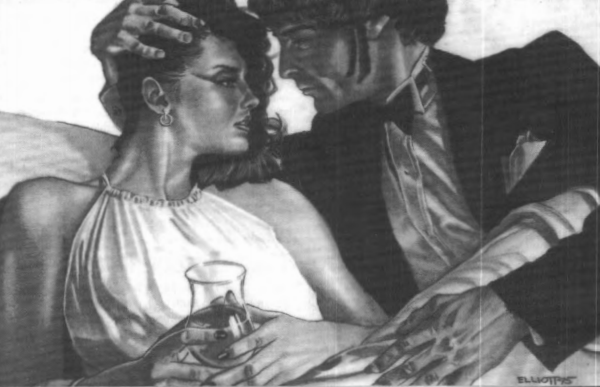
The libertins value beauty as much as they do pleasure. They consider one the expression of the other, but which one is the origin of the other is an opinion that varies depending on who you ask. Aesthetics it’s all for them, in themselves, in others and in the world. Their motto and philosophy is “Pleasure in beauty, beauty in pleasure”. They want that themselves and those who surround them to please them, that their sole presence causes enjoyment to them, and they want that their gratification creates grace.
The core of the libertins hunt is their perceived dichotomy of pleasure and pain, and they experimented with this idea, in the most heinous of ways. For years they pushed the thought, trying to find where the balance between pleasure and pain lies, testing it in themselves and others. They think they have encountered the answer:
- Pleasure is to be believed as the opposite of pain
- Pleasure can be felt and experienced
- We feel the heat of the sun, the pleasure it brings is tangible, and when that heat leaves we feel the cold, the essence and the joy leaves us
- Therefore, if pain is felt, pleasure is leaving the body
The purest form of happiness, they say, can only be achieved by taking the delight from others, by filling them with pain.
The libertins axioms, as they call them, give them carte blanche to do anything in pursuit of their pleasure. Taking for their rejoice, forcefully or not, is a transference of essence from the others to themselves, so it is not only justified but necessary. But the wicked side of the axioms is their second conclusion: that there is pleasure given to the world by inflicting pain on others. As bliss is released when others feel pain, that feeling can be either freed into the world, ingested into oneself, or captured and stored.
Nevertheless, the most horrific consequence of the libertins beliefs is their “application” of their maxims to aesthetics. “Pleasure in beauty” has a distinct meaning when one can distil that pleasure with suffering. They believe that there is artistic satisfaction in the agony of their subjects, either in the simple reproduction of the torture in a picture, painting or braindance, or by creating art with their maimed victims. Dreadful pieces of art can be found where the libertins once were.
The principles of the libertins are paradoxical for them to work as a group, but they are effective by working as teams. The seeking of gratification has no limits, even to murder, so what would stop one libertin to take another and use it as a tool for their pleasure? Their solution is their code. An extension to their axioms, they believe that, in order to maximize their happiness, they need to work together, as they are stronger as such. So, to destroy the comradery of the libertins would be a crime to their quest. Also, to recklessly expose themselves or the others would endanger their hunt, so discretion is paramount. The rest of their code is similar to a thief’s code: to protect the group, to not cooperate with outsiders, etcetera.
A common way for libertins to settle is for some of them to pass as (and sometimes be) artists, sommeliers, designers, decorators and other luxurious professions, which thanks to their knowledge, eccentricity, style and manners they can play very well, and insert themselves in the high society of an area, gaining respectability by working for wealthy and influential people. After slowly building trust, creating a network, becoming notorious, and gaining information, they start their debauched lifestyle. Using their charisma, they will join and create lavish parties, luxury and excess using their circle’s wealth, and amidst the chaos and indulgence they will find their victims. They will steal, kidnap, murder and abuse as long as they can, and then vanish to not be seen again.
There is no easy way to pick a libertin from the crowd. They will look like your run-of-the-mill corpo, or a posh eccentric rich person. You’ll find them as luxury goods experts, art dealers, models, photographers, and videographers, but always around the elite of the city. Libertins are extremely attractive, bodysculpted to perfection, always in the latest fashion, well mannered, charming, knowledgeable and witty. Libertins will often be heavily modified, both in camouflaged cyberware and biotech, specially for combat, and at the edge of cyberpsychosis. They believe they are themselves a tool in their pursuit so they will fill themselves with high-quality augmentations and torture devices to become themselves the brush to paint their victims’ canvas.
Organization: Small groups of very intelligent and skilled individuals. Their hierarchies are soft or non-existent. They find new members amongst their abused victims, turning them with trauma and terror.
Allies: None, but they will collaborate with other libertin groups if they run into them, code-bound between each other.
Le cordon rouge
Territories: Headquarters in the Paris combat zones. Guerrilla units in the rural areas.
Ethnicity: Any
Activities: Robbery, sabotage, vandalism
Description: A gang that formed from the remnants of a fallen culinary school who lost it all during the 4th corporate war and its aftermath, the cordons have been angry about the declining quality of food, the hunger and loss of enjoyment of food in French society. They blame modern life and the mass-production culture as the culprits of the death of cuisine, and they want to destroy it. Their fight is against the large corporate farms. They attack them often, both to sabotage them and to steal from them. Their guerrilla cells hide in the countryside and raid convoys, facilities and fields from the big food farmers, both weakening them and robbing them. The food they steal, they smuggle into their turf in the combat zones in Paris, and summed with their homegrown produce, they feed the impoverished in the outskirts of Paris.
Their mission is not about protecting their people, it is also about reviving the love for food and the socialization that goes around it among the French. They do not simply give meals to the poor; they sit them together in their kitchens, to connect with each other, strengthening their community and reviving the joy of a shared meal. The food they serve is not some mass produced garbage either, they put effort and create meals that would be the envy of many.
The members of the gang are trained both in combat and in some culinary art, which becomes part of their title: porter Dominique, saucier Fernand, sous boulanger Thibaud, chef pâtissier Edouard, vinificateur Jean-Paul. The cordons’ territories are known and the other gangs leave them to keep and defend their turf, aware that their service is good for everyone and that they are fierce in their mission. The gendarmes don’t dare to get anywhere close to their areas, the people they help and the cordons themselves would tear them apart.
Organization: Their guerrilla cells operate in units of 8-12 led by a more experienced chef or sous-chef. Their kitchens follow the traditional Brigade de Cuisine. The Executive chef leads the gang and at the moment that is former director of Le Cordon Rouge school, Joseph Martin.
Allies: Loosely allied with the French combat zone gangs.
Next: Paris